Just a stone’s throw from the shoreline of São Miguel, Ilhéu de Vila Franca do Campo rises like a myth. A near-perfect volcanic ring, quietly circling its own private lagoon. From the cliffs above the town, it appears as a floating halo. From a boat or kayak, it becomes a gateway. And from the air—as we saw it, through drone and salt-bright eyes—it reveals the full curve of its crater and the electric clarity of the water within.
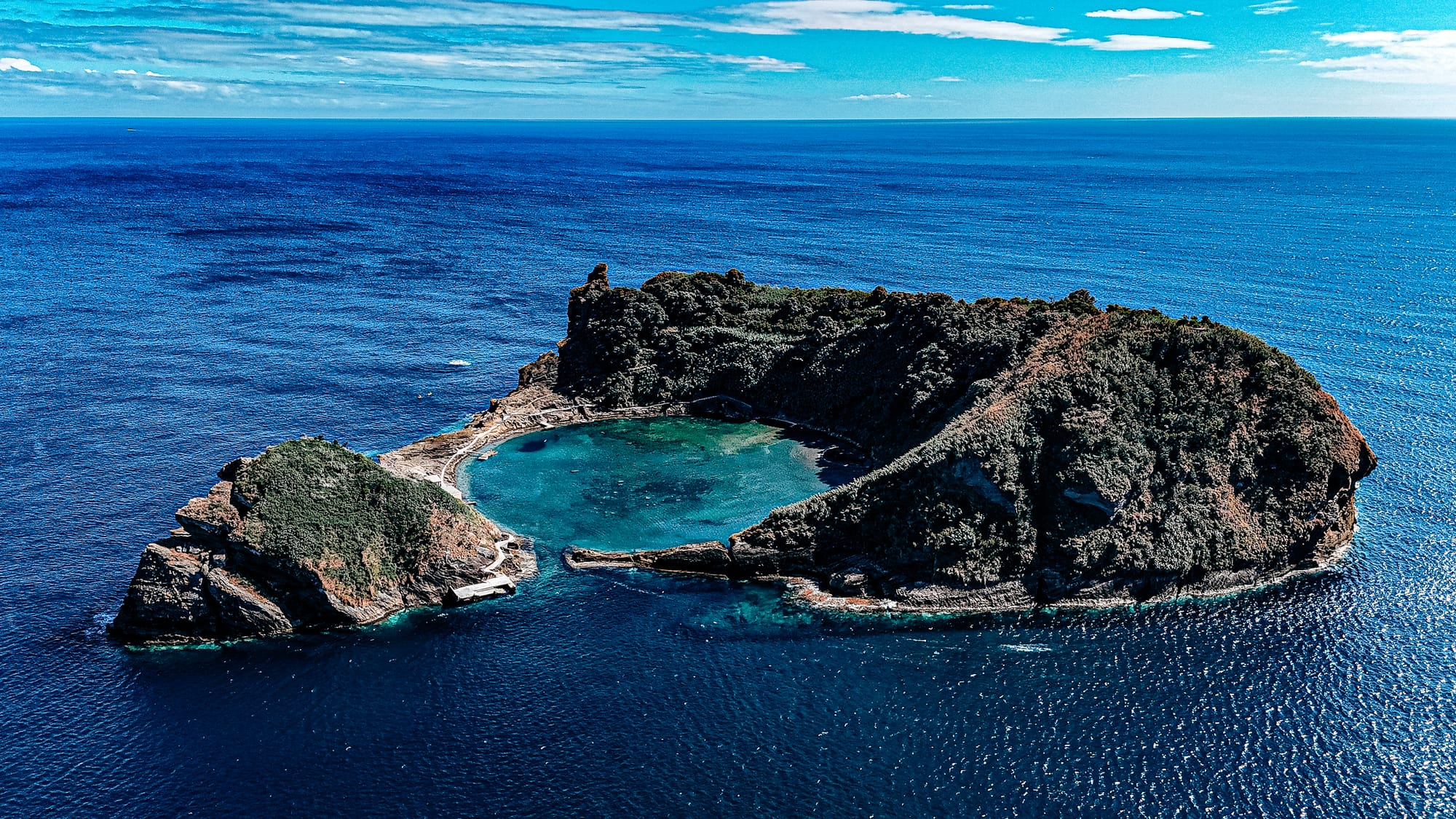
A collapsed cone, long-cooled by time and tide, the islet is what remains of a submerged volcano, its caldeira now a protected marine haven. There’s a break in its northern edge through which ocean flows in and out, gently aerating the circular pool at its center. The shape is surreal. Natural, yes, but so precise it might feel designed.
A marine reserve
The islet has been a protected nature reserve since 1983, its ecological status expanded over the years to include not only the landform but the surrounding marine ecosystem. There are dozens of native and endemic plant species growing in its porous soil, including fire trees, wild orchids, and a single dragon tree leaning defiantly into the wind.
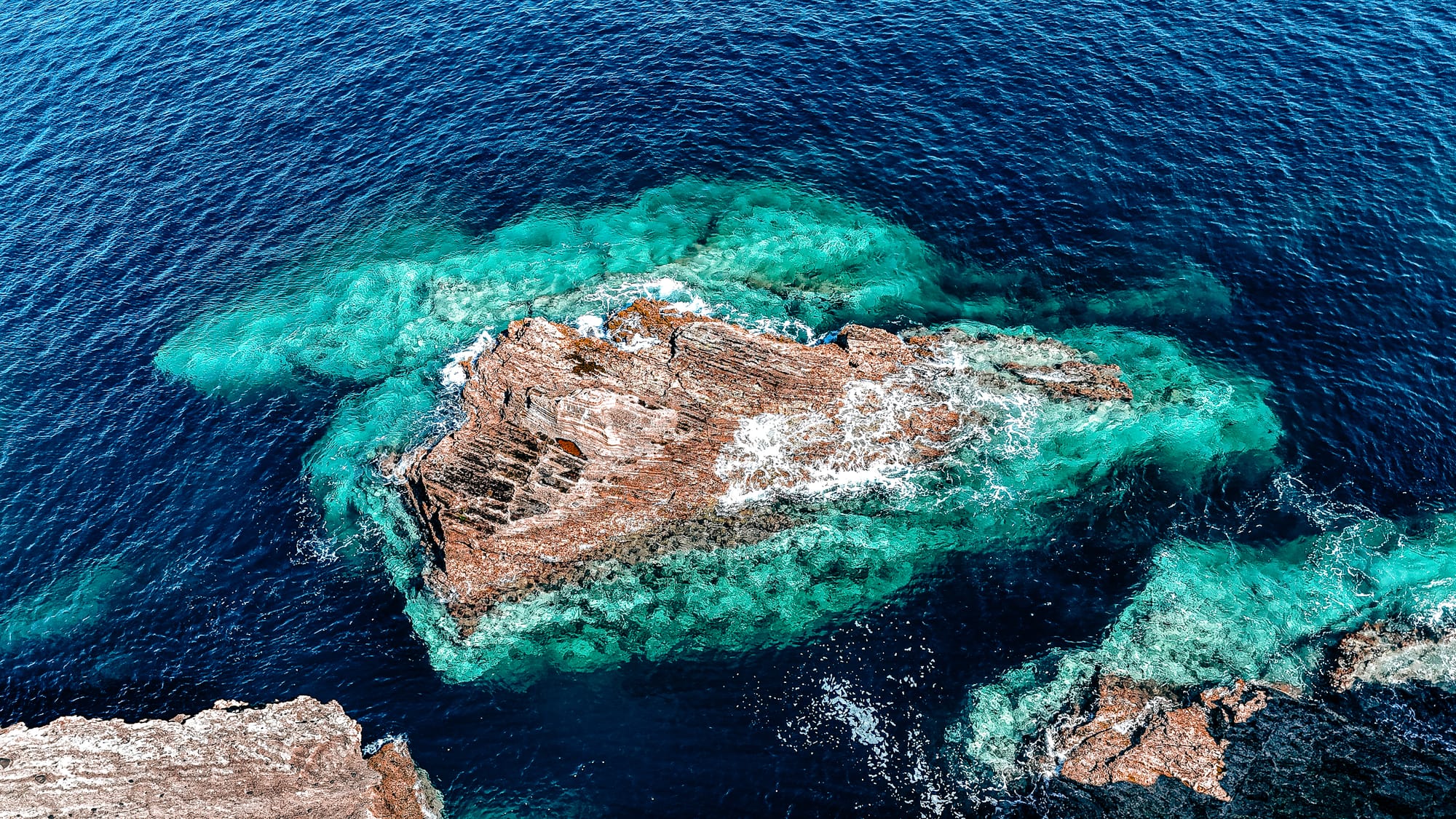
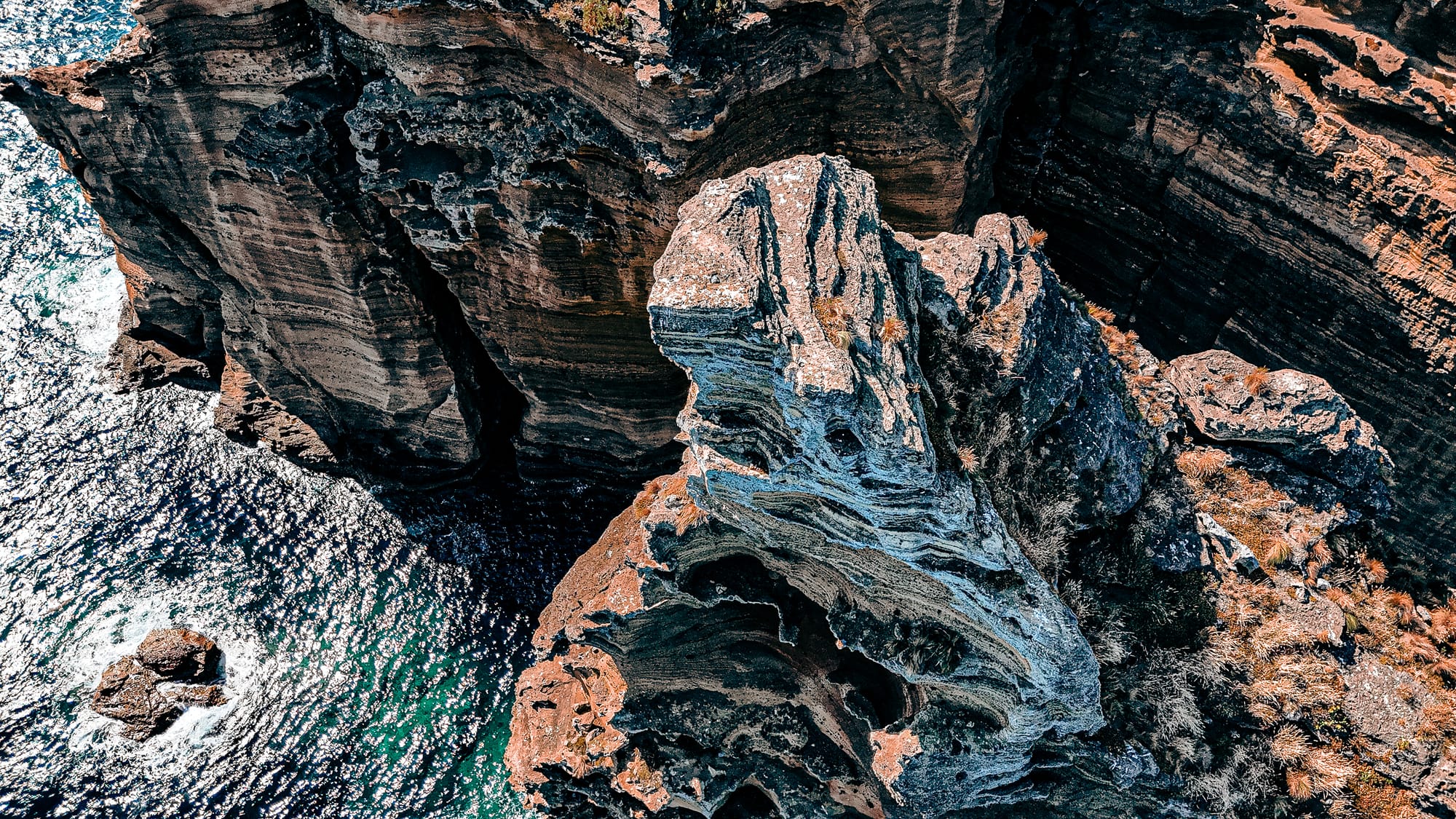
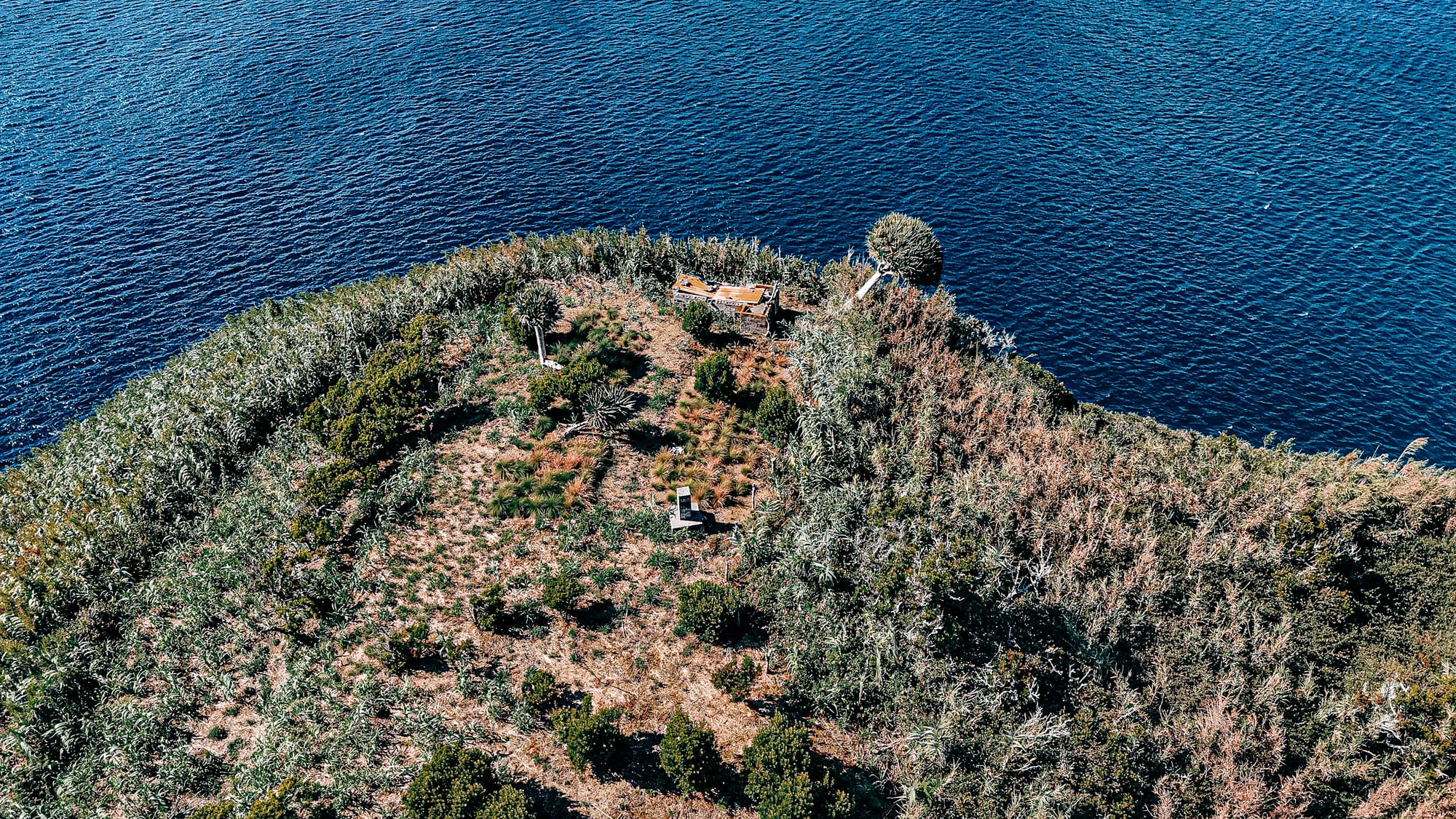
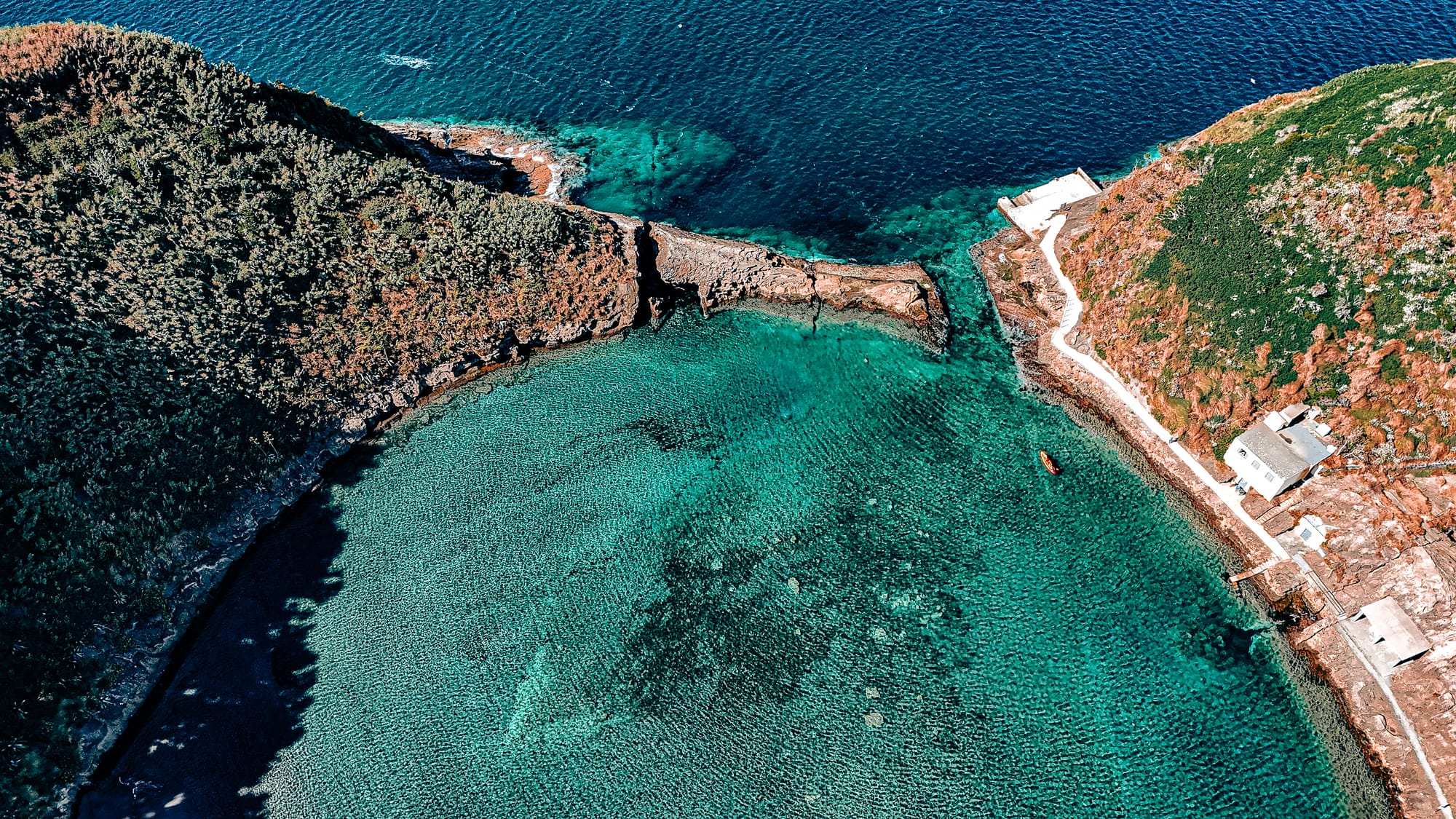
Cliffs, rock shelves, and dense vegetation around Ilhéu de Vila Franca do Campo
But it’s the seabirds who own the heights. Common terns, Cory’s shearwaters, and the occasional storm petrel wheel above the islet or dive into the water just offshore. In summer, the sky over the crater is full of movement. From a kayak or the edge of a boat, you can often watch them nesting in the cracks, catching light like small winged mirrors.
Shaped by fire, held by time
This is not a tourist island. There are no restaurants, no vendors, no beach chairs. The islet has no permanent residents. Its fragile ecology means that visitation is carefully limited and seasonal. When you arrive, it’s just volcanic stone and sea, stairs cut into rock, narrow trails through wind-scoured plants. It feels unburdened.
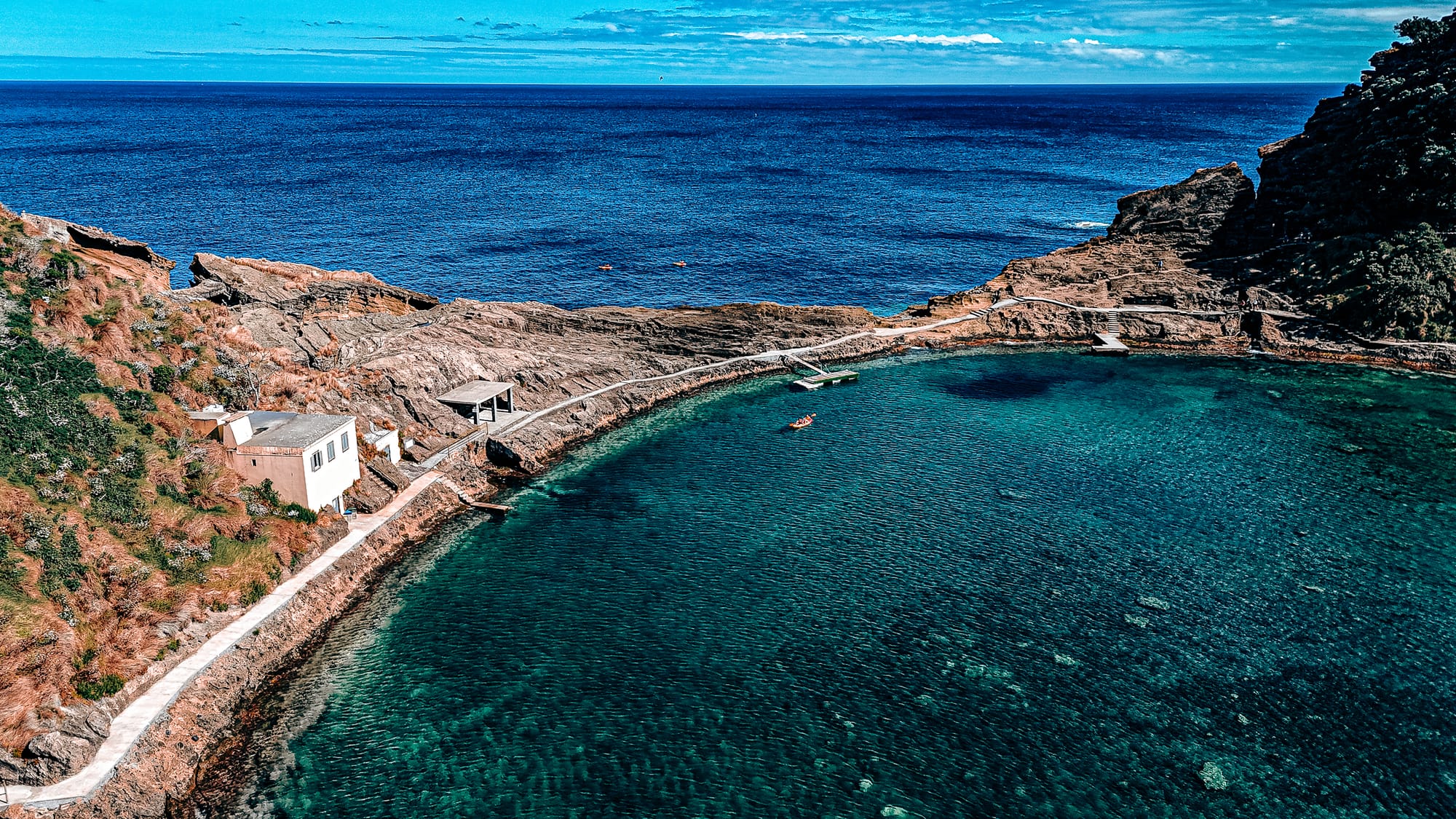
Looking at the islet from above, its perfect enclosure gives the impression of wholeness—as if it was meant to be exactly this. But like everything volcanic, it was once ruptured. And like everything in the Azores, it continues to move, shift, weather.
Swimming in a crater
The lagoon within the islet is shallow and shockingly clear, protected from surf and wind. The textures of the crater wall shift from low, soft stone to jagged verticals. Inside, swimmers drift slowly, often in silence, almost reverent. The water is warm and still, and the white sandy bottom glows beneath. Depending on the tide, small waves lap through, refreshing the interior. It’s like entering a geological heartbeat.
But you can’t always swim. In some years, due to increased conservation measures, swimming inside the crater has been restricted. Even so, just getting there—floating in the small boats that carry passengers across the narrow channel, or paddling your own line on a kayak—is part of the encounter.
Kayaking around the islet
Of the ways to see Ilhéu de Vila Franca do Campo, kayaking might be the most intimate. From the southern marina at Vila Franca, tours head out across the shallow channel, tracing the outer rim of the islet. From the seat of a kayak, the water is glassy and close. The cliffs are taller than expected. Seabirds nest in tiny caves, some of them dug impossibly deep into the rock face.
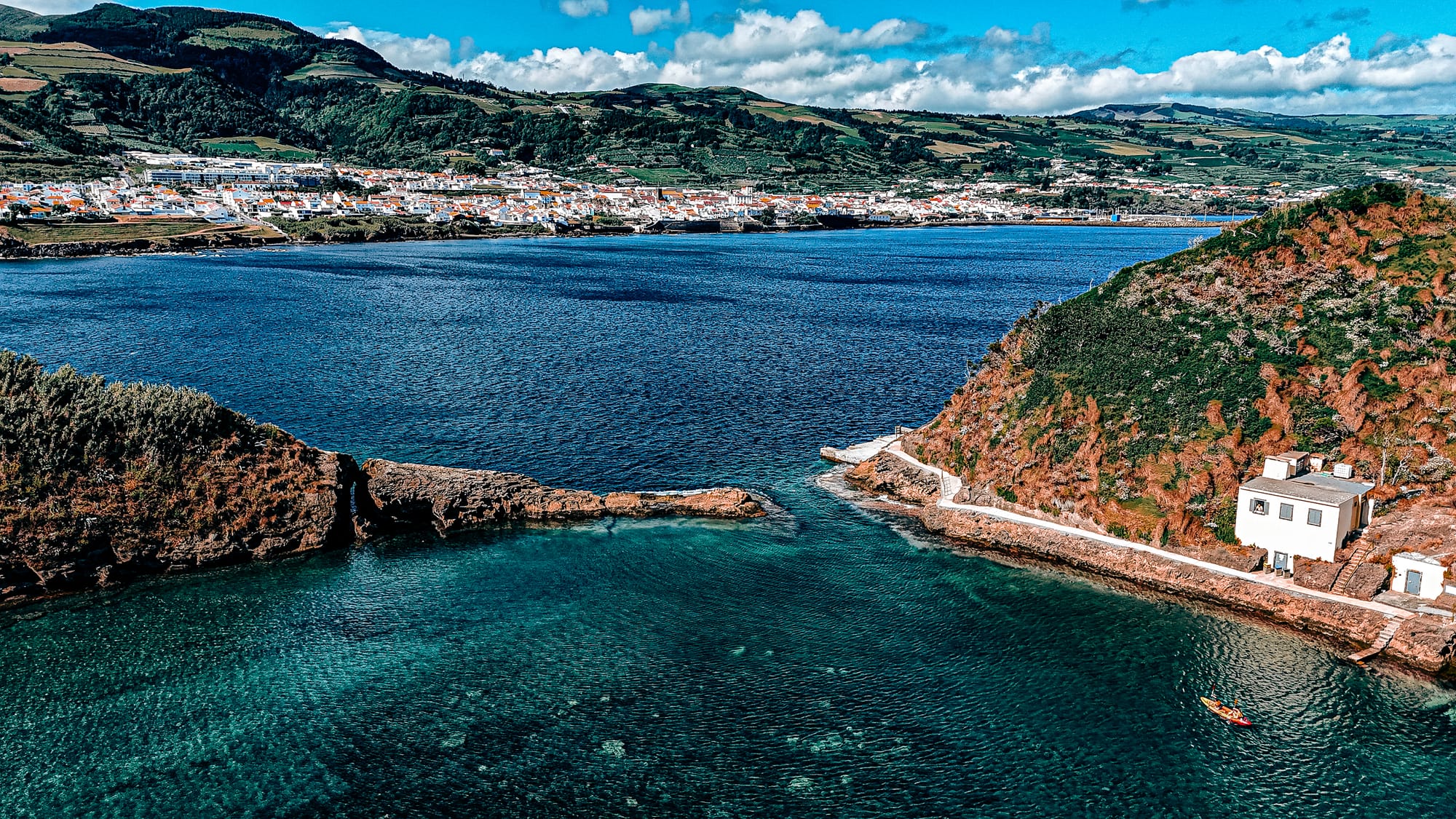
Many tours stop at small pockets of calm water around the islet—ideal for snorkeling when conditions allow. Underwater, the volcanic rock gives way to blooming marine life: parrotfish, wrasse, sea urchins, algae forests, sometimes even octopus. The outer coast is alive, and being on the water brings you into conversation with it.
Snorkeling inside the islet
For those who want to go deeper, snorkeling tours offer a chance to explore the underwater contours of the islet’s interior. Within the lagoon, visibility is often exceptional—especially on calm days—and the marine life is surprisingly rich for such a small, enclosed space. You might see schools of salema, ornate wrasse, parrotfish, sea urchins, and, if you’re lucky, the occasional moray eel slipping between the rocks.
The water here is warmer and gentler than the open Atlantic, making it an ideal entry point for beginner snorkelers. Tours depart directly from Vila Franca do Campo and include gear and guidance.
Boat tours with biologists
For those looking to stay dry but still immerse, boat tours are an excellent way to get close. Several are led by biologists who narrate the geological origins of the islet, point out nesting sites, and help identify birds and fish as you circle the perimeter.
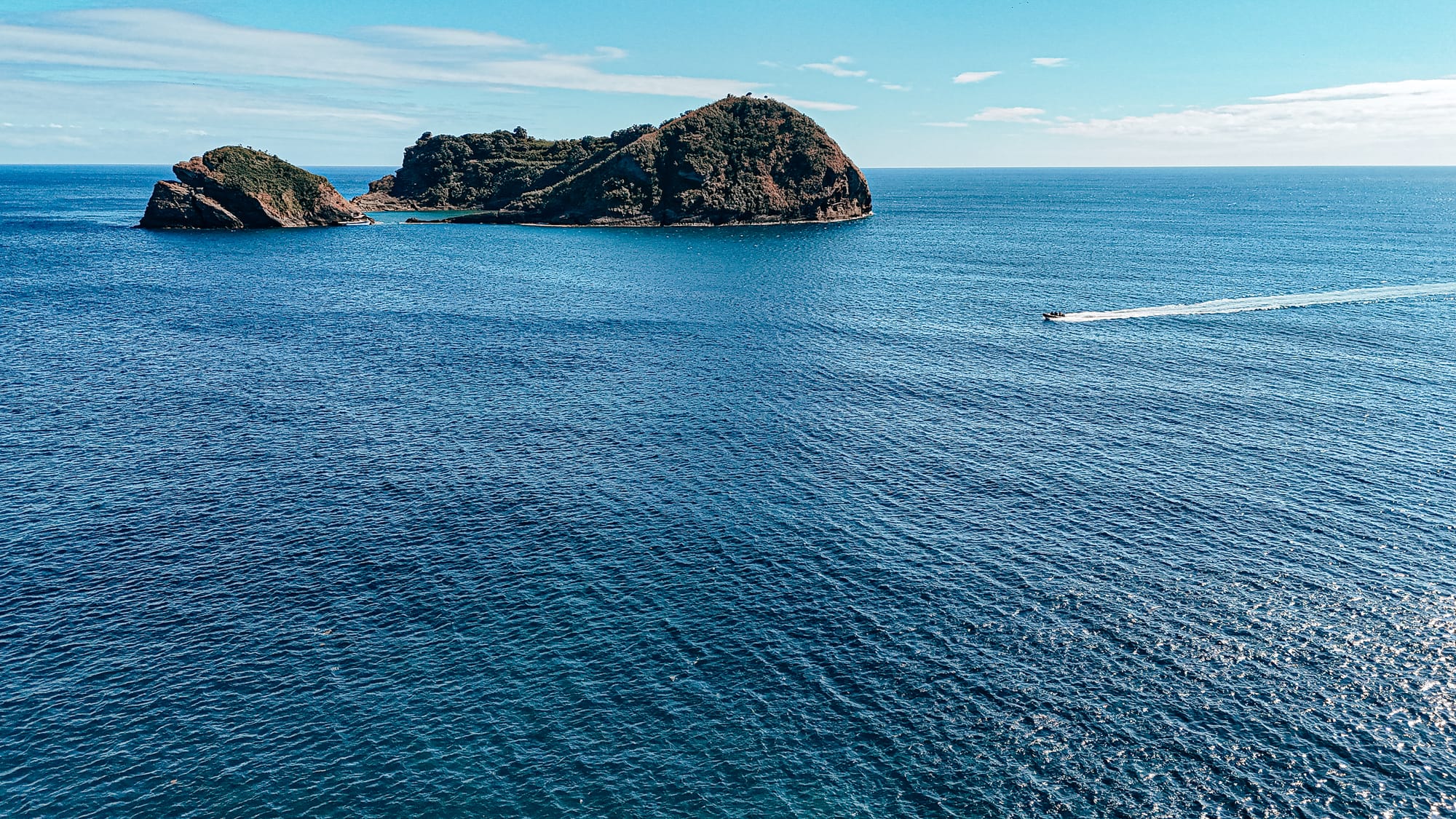
Some tours also combine the visit with whale dolphin watching or extended snorkel sessions just outside the reserve boundaries. These longer itineraries allow time to linger in the channels and caves that can’t be reached by foot.
Access and ethics
Visits to the islet are only possible in summer, and only with limited tickets per day. The crossing from Vila Franca do Campo takes just a few minutes by boat, but the impact of visitors is closely monitored.
We recommend going with a licensed guide or tour—not just for convenience, but because this place deserves interpretation. The marine reserve status isn’t just a label. It’s a reminder that Ilhéu de Vila Franca do Campo is not a playground, but a living system. A temporary gift. One that asks for our care in return.
How we saw it
From the sky, in soft morning light, the islet is almost not real. A ring in the Atlantic, floating in a field of turquoise. You can see its full outline, the exactness of the crater, the shadows of its inner shelf. You can see birds lifting off from the rim. Boats making their gentle approach. The shimmer of whitecaps. The color of breath.
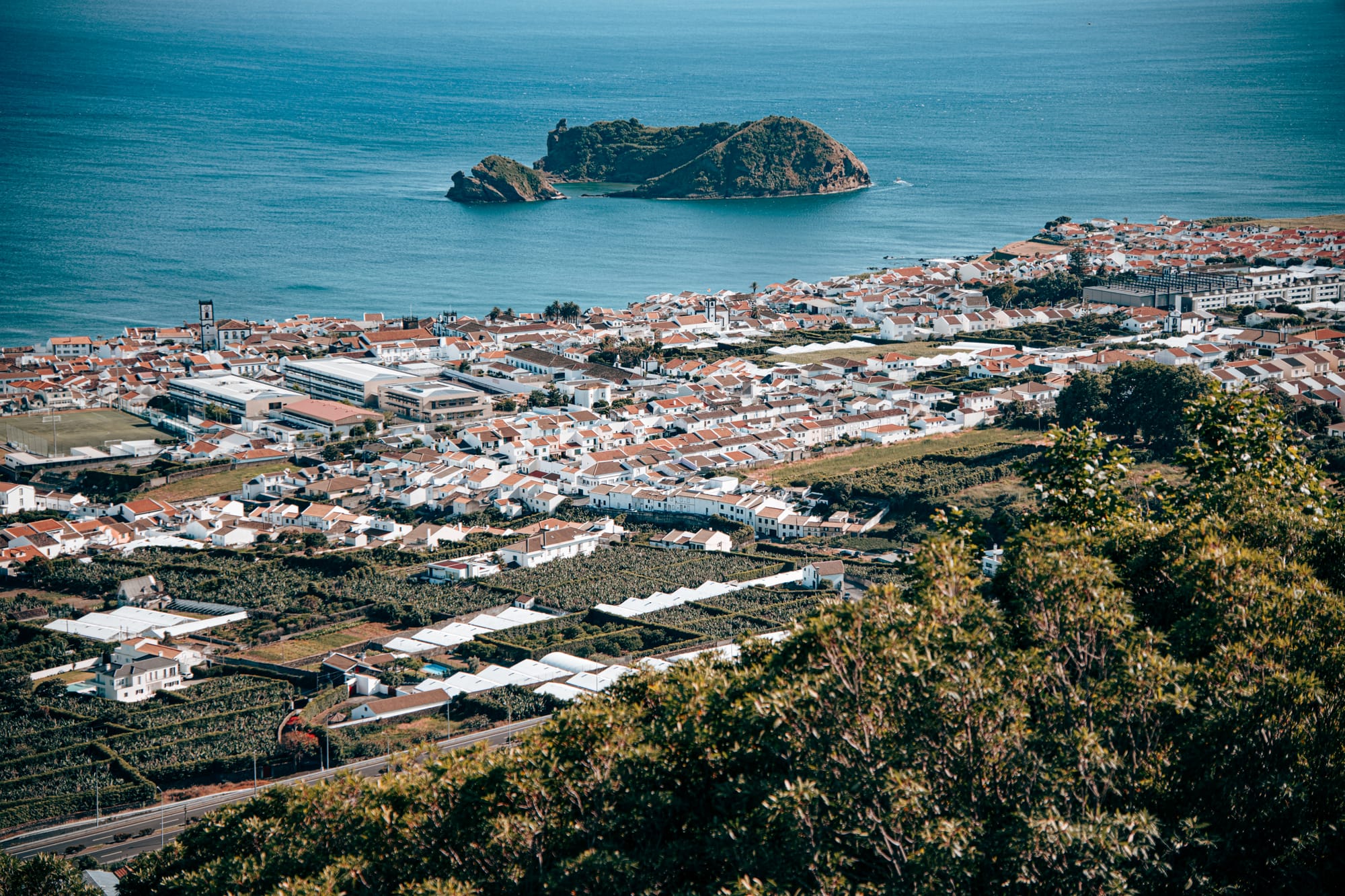
Up close, it’s all texture: the grain of the volcanic wall, the vines climbing up from stone, the scratch of seabird call. The water changes hour to hour. The sound quiets and returns.
Looking to visit?
Book a kayaking tour, book a snorkeling tour, or reserve a spot on a biologist-led boat tour.






